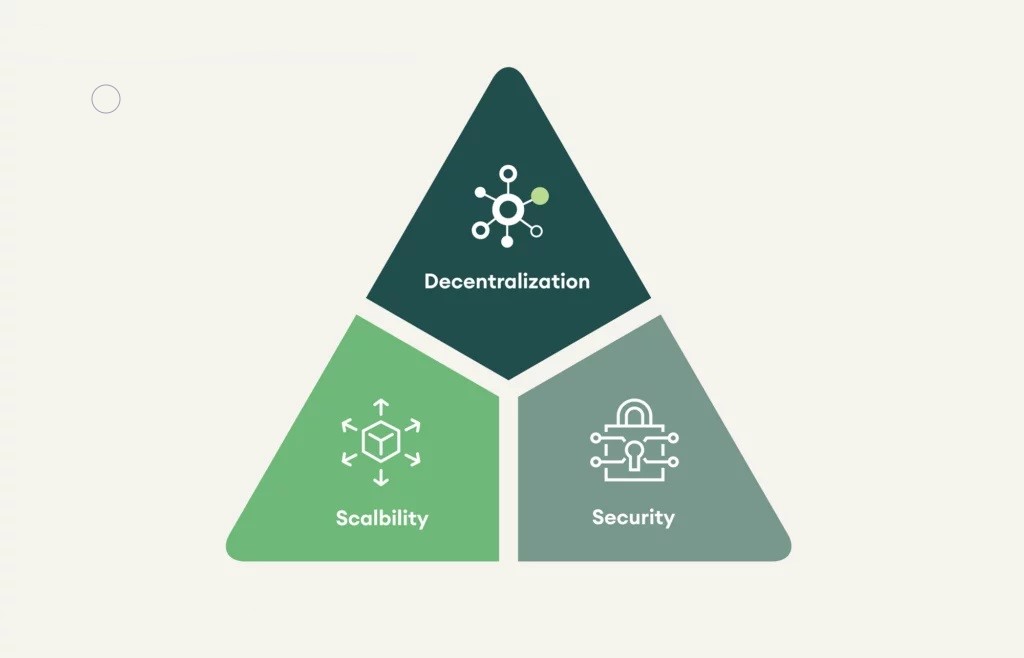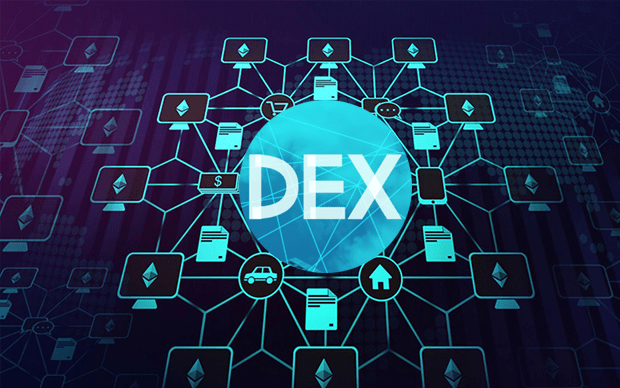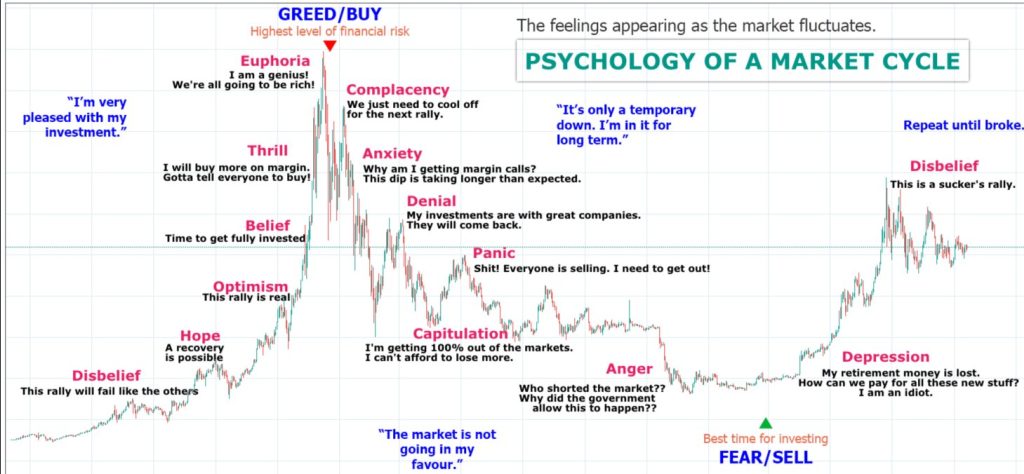Trilemma
The blockchain trilemma is a concept coined by Ethereum co-founder, Vitalik Buterin, describing the challenge of balancing three critical aspects in blockchain development: decentralization, security, and scalability.
Trilemma Simply means situation when you have 3 variables, but you can only have two, while sacrificing one. In project management there’s a trilemma of (Quality, Time, and Cost) You can’t have all three, you will have to sacrifice one to get other two.
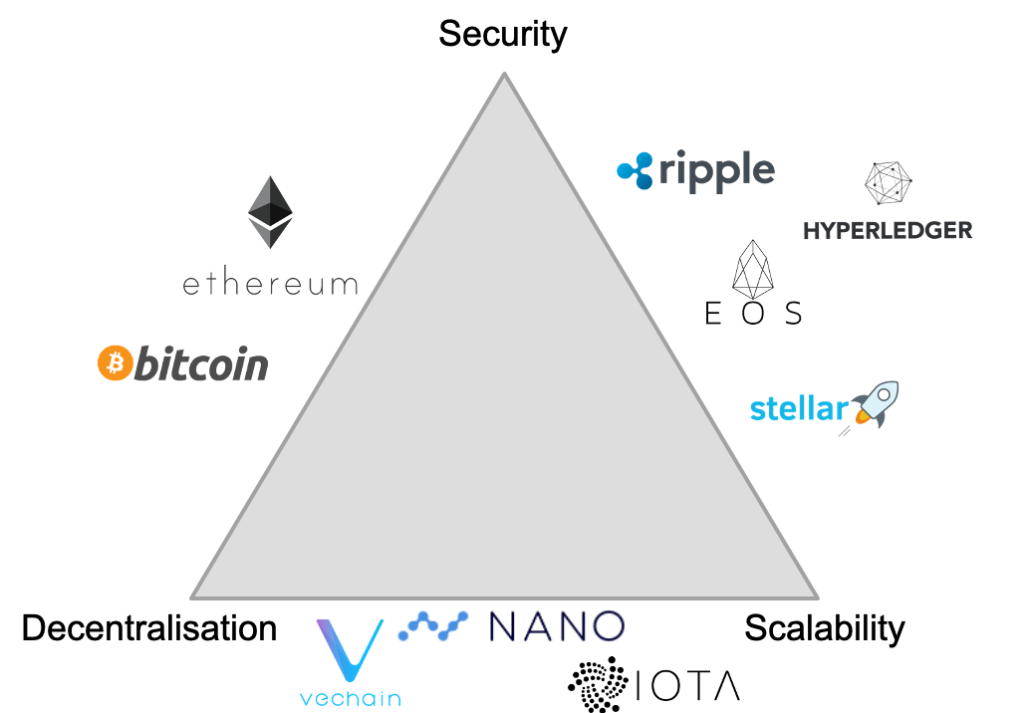
3 Elements of Blockchain Trilemma
Decentralization
Decentralization forms the backbone of blockchain technology, ensuring that no single entity controls the network. Instead, it operates across a wide network of computers. This distribution of control enhances security by eliminating single points of failure. However, achieving high decentralization often leads to slower network and transactional speed.
Security
Security is crucial in blockchain networks, ensuring the accuracy and integrity of information stored on the ledger. A highly secure blockchain prevents tampering and ensures data remains incorruptible. However, enhancing scalability by reducing the number of nodes (computers) can compromise security, as fewer nodes mean fewer participants securing the network, hence higher chances for bad actors to take over.
Scalability
Scalability refers to a blockchain’s ability to handle increasing transaction volumes without sacrificing performance. A scalable blockchain can accommodate growth in network usage while maintaining efficiency. However, achieving scalability without compromising decentralization or security is a significant challenge.
Many existing blockchains, such as Bitcoin and Ethereum, prioritize decentralization and security over scalability. As a result, they may experience limitations in transaction throughput as network usage grows. Like, BTC can only handle 7 transactions per second, while Ethereum originally could 15 transaction per seconds. That’s nothing compared to Visa’s tens of thousands of TPS.
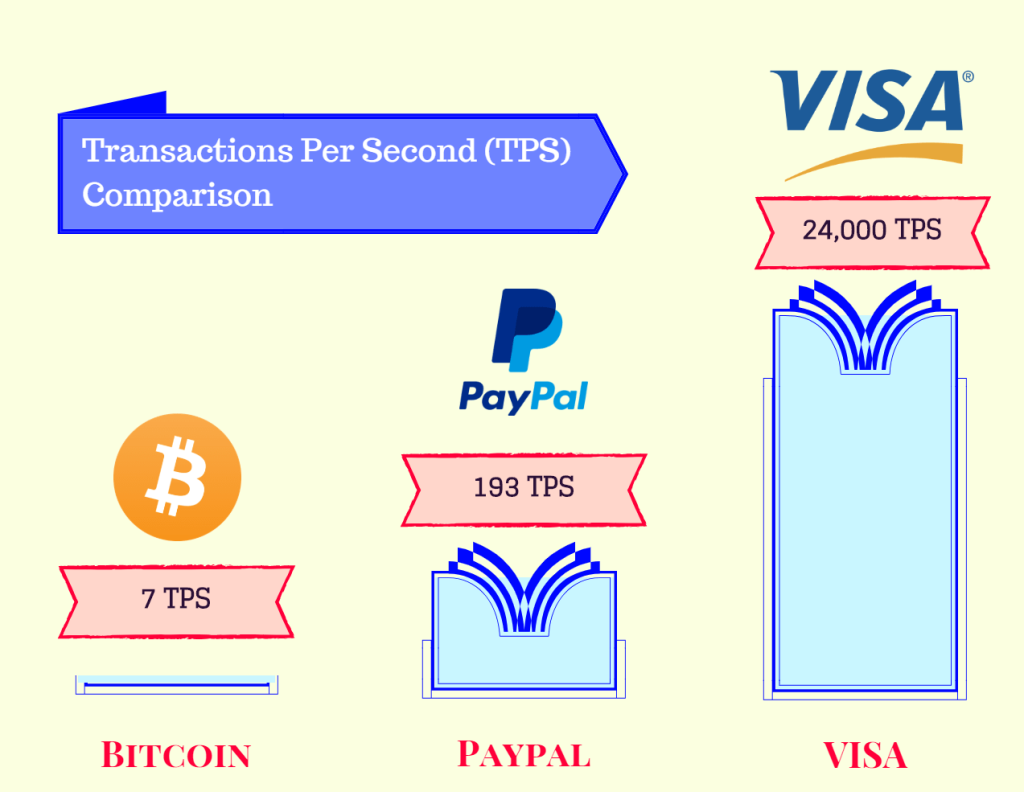
Solving the Blockchain Trilemma
Various approaches have been made to address the blockchain trilemma, including layer-2 scaling solutions, sharding, and consensus algorithm enhancements. Layer-2 solutions, like the Lightning Network, aim to reduce network congestion by enabling off-chain transactions, while sharding involves partitioning the blockchain into smaller, more manageable segments. Additionally, advancements in consensus algorithms, such as Proof of Stake (PoS), seek to enhance scalability without compromising security.
Here are couple examples:
Bitcoin Lightning Network
The Lightning Network is a Layer 2 solution for the Bitcoin network designed to improve scalability by enabling near-instant transactions between users. It achieves this by conducting certain high-frequency transactions off-chain and later settling them on the main blockchain. While the Lightning Network has mitigated some scalability issues for Bitcoin, it still faces criticism for being less decentralized and secure compared to on-chain transactions.
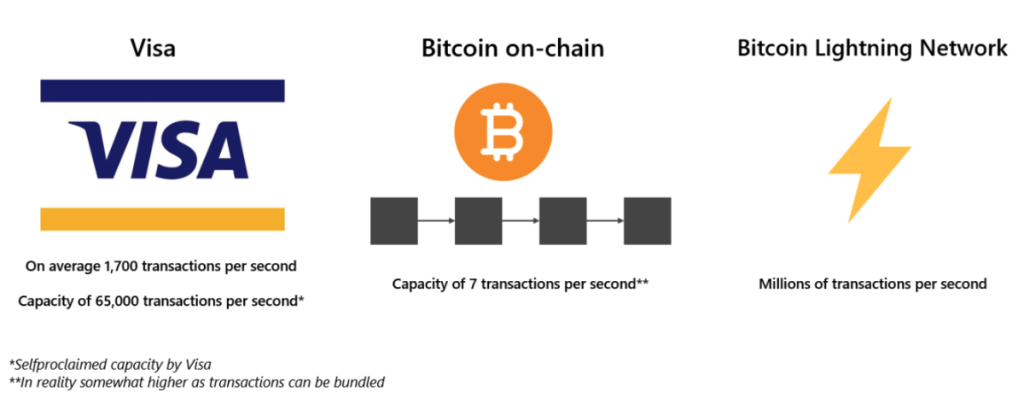
Ethereum 2.0 (Consensus Layer)
Ethereum 2.0 is a major upgrade to the Ethereum platform aimed at addressing scalability issues. It involves transitioning from Proof of Work (PoW) to Proof of Stake (PoS) consensus mechanism, which is faster and more energy-efficient. Additionally, Ethereum 2.0 implements sharding, dividing the blockchain into 64 parallel chains to process transactions more efficiently. These changes have significantly increased Ethereum’s throughput, potentially reaching 100,000 transactions per second (TPS).
So, as you can see trilemma is still an issue, but work is done and eventually it will be solved, like most other issues in tech world.
